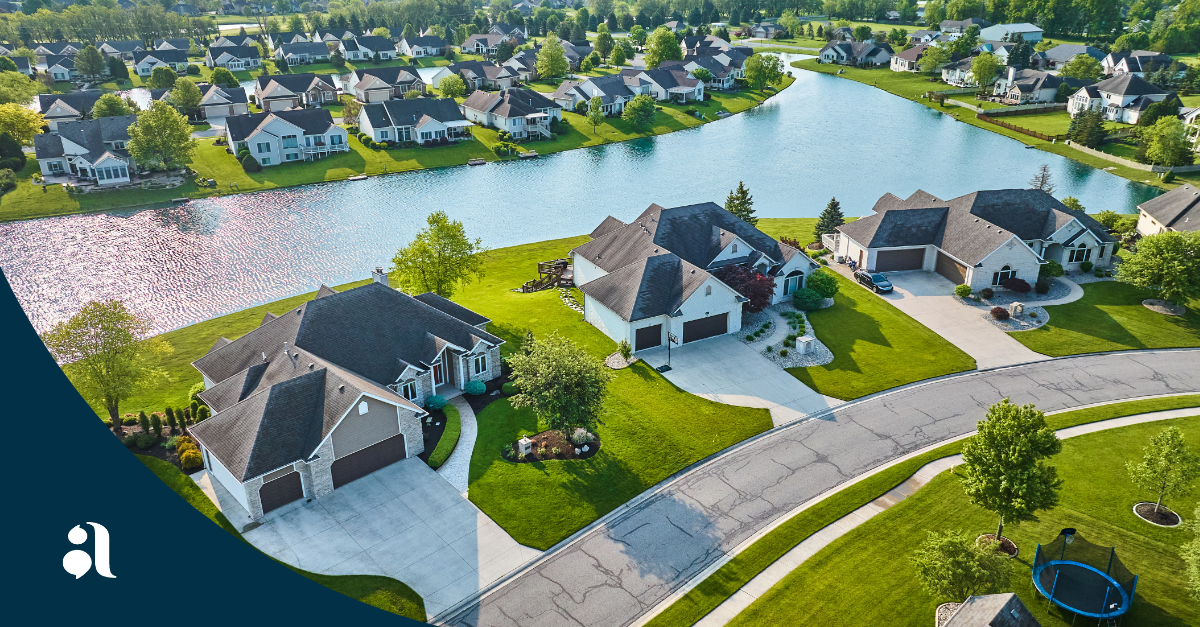
How to Reduce HOA Email Blasts and Keep Residents Engaged
Introduction: Why Reducing HOA Email Blasts Matters
For many master-planned communities, the HOA email blast is both helpful and harmful. Email is quick and inexpensive, but when residents receive too many messages—or ones that don’t apply—they tune out. Overcommunication causes email fatigue, missed updates, and frustration, eroding trust if residents feel bombarded.
The solution isn’t sending more—it’s sending smarter. By reducing unnecessary blasts and focusing on targeted, meaningful messages, HOAs can improve engagement, cut complaints, and strengthen connections between residents and their community. Modern community engagement platforms like Alosant make this possible, helping HOAs reduce email volume while keeping residents informed through smarter, more personalized communications.
Understanding Why HOA Email Blasts Get Out of Hand
HOA teams often start with the best intentions: keep everyone informed and avoid leaving anyone out. Yet, this often leads to a one-size-fits-all communication style that quickly overwhelms residents. The root causes of excessive email blasts are usually procedural rather than intentional. Understanding why this problem happens is the first step toward solving it.
- One-size-fits-all approach
Many HOAs email the entire community for every update. A pool closure notice, for example, may go to households without pool access, creating unnecessary noise. - Unsegmented distribution lists
Without lists for specific neighborhoods, amenities, or rule sets, every resident gets the same updates—even when most don’t apply. - Manual, repetitive processes
Staff often copy and paste messages multiple times a week, leading to duplication, errors, and unnecessary email volume. - Fear of under-communicating
Boards worry residents will miss something important, but sending more messages often results in more being ignored. - Lack of personalization
Generic emails fail to connect with homeowners, and irrelevant messages make residents more likely to skip future updates.
Recognizing these root causes allows communities to shift toward a smarter, resident-first approach where fewer, more relevant messages replace the endless stream of generic blasts.
Smart Segmentation: How to Reduce HOA Email Blasts with Targeted Messaging
The most effective way to reduce HOA email blasts while maintaining engagement is smart segmentation. By sending residents only the messages that matter to them—based on location, amenities, or interests—HOAs respect their time, cut inbox clutter, and increase the value of each email.
Segmentation doesn’t just lower email volume; it builds trust. Residents receiving relevant updates are more likely to read, act, and view the HOA as a reliable, organized partner rather than a source of noise.
Here’s how to put smart segmentation into action:
- Segment by address or village
In multi-village communities, each area has different covenants and amenities. Send emails only to the village affected, not the entire community. - Segment by topic or resident interest
Tailor updates to what households care about. Pet-free homes don’t need pet rule reminders, and event-only subscribers don’t need policy alerts. - Use behavior-based triggers
Track engagement and focus on the content residents interact with most to make emails more relevant. - Implement automated address recognition
Systems like Alosant can match a resident’s address to their neighborhood automatically, ensuring only the right updates reach their inbox.
For example, in a 20-neighborhood community, all residents initially received the same emails, leading to complaints about irrelevant updates and missed information. After implementing segmentation with address-based recognition, residents began receiving only messages relevant to them, which improved engagement and reduced frustration.
Segmentation lays the foundation for a modern HOA communication strategy, making every email timely and meaningful. Alosant’s address-based recognition ensures residents automatically receive updates relevant to their exact village or neighborhood, eliminating the noise of community-wide blasts.
Content Strategy: Less Is More
Even with segmentation, HOAs can overwhelm residents if every announcement is sent separately. A strong content strategy makes each message intentional, concise, and aligned with the community’s culture. Shorter, focused emails show residents their time is valued and encourage higher engagement.
The key is to send fewer, higher-value messages. By bundling updates, streamlining copy, and creating a predictable rhythm, HOAs reduce inbox fatigue while reinforcing a professional, well-organized image.
Here are ways to put a “less is more” content strategy into practice:
- Combine updates into digests
Send one weekly digest instead of multiple separate emails for events, policies, or amenity updates. - Segment your messaging
Announcing a fun community event in the same email that warns residents about an HOA policy violation can send mixed signals. Sending the right message at the right time on the right channel is key. - Keep messages clear and brief
Use short sentences, bullets, and headers to make emails easy to skim. - Move non-urgent content to other channels
Use an app with push notifications for vendor tips, lost-and-found, or casual updates. - Use visuals wisely
A single image or key-date callout makes emails more engaging than long text blocks.
Technology Tools: Enabling Smarter Automation
Even with segmentation and a clear content strategy, manually managing HOA emails can be overwhelming. Technology solves this by automating communication, ensuring messages are timely, relevant, and consistent without daily effort.
Automation moves HOAs away from the “send everything to everyone” mindset. Smart systems target the right households, schedule updates, and trigger alerts automatically—reducing email volume while creating a more personalized resident experience.
Here’s how technology can help reduce unnecessary blasts:
- Address-based recognition
Automatically match residents to their neighborhood so only relevant updates are sent. - Automated triggers
Send welcome emails, rule reminders, and amenity alerts only when needed, without manual effort. - Multi-channel delivery
Shift information into an app that is easy to find and search in their own time and deliver important info with push notifications or app alerts to reduce inbox overload. - Resident preference management
Let homeowners choose the types of emails they want to receive to cut unnecessary sends.
:
In one master-planned community, the teams were sending multiple manual emails each week to all residents, causing frustration and leading to missed updates. After implementing Alosant and adopting address-based recognition, residents began receiving only relevant information through their mobile app. Engagement improved, and staff significantly reduced the time spent managing communications and questions.
With automation in place, pairing it with clear governance ensures communication stays thoughtful and resident-focused.
Governance & Policy: Building a Culture of Thoughtful Communication
Segmentation, content strategy, and automation are vital, but lasting improvement requires a cultural shift. Without clear policies, over-communication can creep back in. Governance—through defined processes and email guidelines—keeps messages strategic, consistent, and respectful of residents’ time.
Strong communication policies build trust. When residents know every email is vetted, timely, and relevant, engagement rises, and the HOA is seen as organized and resident-focused rather than a source of inbox clutter.
Here are ways to build that culture through governance and policy:
- Create an email policy
Define when to send community-wide blasts versus posting in the app or portal. - Form a small review committee
Have two or three people approve emails to avoid duplicates or irrelevant messages. - Use an editorial calendar
Schedule newsletters and recurring updates to prevent overlapping sends. - Track communication metrics
Monitor opens, clicks, and unsubscribes to spot over-sending trends. - Collect resident feedback
Ask homeowners if the frequency feels right and adjust policies as needed.
With Alosant, boards can implement their communication policies seamlessly—automated triggersand multi-channel posting keep messaging consistent and resident-focused.
A Southwest HOA faced frequent complaints as multiple staff and board members sent overlapping emails on the same topics. By creating a communications review committee and adopting a simple email-use policy, they cut weekly emails in half. Residents felt “caught up without being spammed,” and board complaints about over-communication dropped significantly.
With clear governance in place, the HOA shifted from reactive, high-volume messaging to a consistent, strategic communication rhythm.
Real-World Example: Master-Planned Community Success Story
The power of reducing HOA email blasts comes to life when you see it in action. One master-planned community we worked with faced a communication challenge that will sound familiar to many HOA leaders: multiple neighborhoods, multiple covenants, and multiple rule sets—but only one approach to communication. Every resident received every message, regardless of whether it applied to them. Over time, residents stopped reading emails entirely. Critical updates were missed, in person questions rose, and the board felt trapped in a cycle of over-communicating and overstaffing to stay “safe.”
This community consisted of 20 distinct neighborhoods—let’s call them Villages A through T. Each village had its own covenants, amenity access rules, and communication needs. Some neighborhoods had pools, others had clubhouses, and some had additional HOA fees that came with unique requirements. Yet all communications were being sent in bulk, creating noise and confusion. Residents were left asking: “Do these rules apply to me?” or worse, “Why am I getting all this email?”
Here’s how the community transformed its approach:
- Address-based recognition
A resident's home address was matched between the resident portal and the app, which automatically linked them to the correct village. - Segmentation and targeted messaging
Each village has its own document repository and receives only its own updates, with urgent alerts still sent community-wide. - Weekly digest emails
Multiple messages became a single, scannable weekly update for each village. - Triggered Push Notifications
Move-ins, amenity closures, and rule violations are sent through notifications to only those impacted.
Overall, the perception of the HOA changed. Residents began to see the board as organized, considerate, and responsive, rather than as a constant source of email noise. By shifting from high-volume communication to high-value communication, the community built lasting trust and improved resident engagement across the board.
Key Takeaways for HOA Leaders
Reducing HOA email blasts isn’t just about fewer messages—it’s about smarter communication. When residents receive only relevant updates, engagement rises, trust grows, and the HOA’s credibility strengthens.
By combining segmentation, content strategy, automation, and resident empowerment, HOAs can replace over-communication with meaningful, resident-focused messaging. This approach enhances the overall experience and positions the HOA as a trusted partner, not a source of frustration.
Here are the key takeaways every HOA leader should remember:
- Segment with precision
Use neighborhood alignment and interest groups to keep messages relevant. - Consolidate communications
Replace multiple emails with digest updates and structured newsletters. - Leverage automation
Automated triggers ensure timely, accurate communication with less effort. - Align with governance and brand
Keep every message clear, professional, and community-focused. - Measure and adjust
Track engagement and feedback to refine communication strategies.
When HOA leaders adopt these strategies, email stops being a burden and becomes a tool for connection. Residents feel informed rather than overwhelmed, and the board earns the trust that is so essential for a thriving, engaged community.
Alosant gives HOAs the tools to achieve these outcomes—reducing email blasts, improving engagement, and amplifying your community’s brand without adding to your workload.
Alosant empowers HOAs and master-planned communities to deliver smarter, more resident-focused communication. With tools for segmentation, automated email triggers, and digest scheduling , Alosant reduces inbox clutter while ensuring residents never miss the updates that matter most. By streamlining your communication strategy, your team saves time, builds trust, and strengthens the community brand—not ours.
Ready to see how Alosant can help your community reduce email blasts and boost resident engagement?
Schedule a personalized demo today.
Conclusion
Reducing HOA email blasts is about more than decluttering inboxes—it’s about building trust and delivering communication that residents value. When messages are timely, relevant, and aligned with your community’s brand, engagement rises and frustration fades.
With the right approach—and the right platform like Alosant—your master-planned community HOA can shift from high-volume to high-value communication, saving time while strengthening connections across the community.
Frequently Asked Questions About How to Reduce HOA Email Blasts
How can HOAs reduce email blasts without missing important updates?
HOAs can reduce email blasts by segmenting residents based on their neighborhood, interests, and amenity access. Pair segmentation with weekly digest emails and urgent alerts sent separately. This ensures homeowners only receive relevant messages without missing critical updates.
What tools help HOAs manage and automate email communication?
Community engagement platforms like Alosant allow HOAs in master-planned communities to automate email workflows with address-based recognition, triggered alerts, and digest scheduling. These tools reduce manual effort and prevent sending unnecessary emails to the entire community.
Why do residents unsubscribe from HOA emails?
Residents unsubscribe when they receive too many irrelevant messages. Generic or duplicate blasts can lead to email fatigue. Sending fewer, targeted updates and allowing residents to control their preferences can significantly reduce unsubscribe rates.
Further Reading
- Community Association Institute (CAI)
- U.S. Small Business Administration (SBA)
- National Association of Housing Cooperatives (NAHC)
- Master Planned Communities Need Better Event Management—Here’s How
- The Value of a Lifestyle Management Platform for Master Planned Communities
- Resident Engagement Technology for Modern Communities



